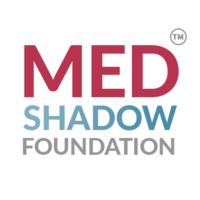Welcome to the FDA Side Effects Update. This series is designed to keep you informed about the latest safety advisories and newly documented side effects of your medications. In this installment, we’re highlighting safety updates concerning Copaxone, Glatopa, glatiramer acetate, and OMVOH.
How to Read This Report
This report is prepared using the most recent information posted in the SrLC database and in FDA Safety Communications. It highlights recent safety labeling changes. It includes only newly reported side effects and safety information; additional side effects and warnings will appear on the drug label. Not all recent changes to the SrLC database or the label may be listed here. For all changes and the complete list of warnings and side effects, please click on the drug label link.
Each of the items (approval and update dates, drug names, etc.) contained in this report are obtained from the SrLC or FDA communications. The side effects and medication descriptions are simplified and made clearer, if needed. Sometimes, additional sources, like a medical dictionary, may be used to translate technical medical phrases. Other sources (company news, FDA press releases, etc.) may be used to learn about some label changes.
Copaxone (glatiramer acetate injection) and branded generic Glatopa (glatiramer acetate injection)
Initial FDA Approval: 1996
Side Effect Update Date: January 22, 2025
Medication Description: Treats multiple sclerosis (MS) by reducing the number of MS relapses. Copaxone helps reduce the immune system’s attack on the nerves in the brain and spinal cord, a key issue in multiple sclerosis (MS). The prefilled, self-injected medication is administered either daily or three times a week, depending on product strength.
Updated Side Effects/Safety Information: A new boxed warning has been added about the rare risk of anaphylaxis. The new warning states that anaphylaxis can occur at any time, from as early as right after the first dose or up to years after starting the medication. The warning adds that Copaxone (glatiramer acetate) should not be taken by patients with a history of hypersensitivite reactions to it, including anaphylaxis. Patients are advised to seek medical attention immediately if symptoms are more than mild, worsen or do not go away shortly after an injection.
Symptoms of anaphylaxis include wheezing or difficulty breathing, swelling of the face, lips, or throat, and hives. These symptoms can quickly progress to more serious symptoms, including severe rash or shock, which is a life-threatening condition.
The decision to add a boxed warning was based on a review of 82 cases with serious outcomes reported in the FDA Adverse Events Reporting System (FAERS). Most of the 82 patients experienced anaphylaxis within an hour of taking the medication, while 19 developed it more than a year after starting treatment. In total, 51 were hospitalized, and six died. The FDA acknowledges that since the 82 cases include only those reported to the FDA and found in the medical literature, additional cases of glatiramer acetate-related anaphylaxis have likely occurred worldwide.
Essential Extras: Copaxone is the original, branded version of glatiramer acetate; the medication is also available as a branded generic (Glatopa) and as non-branded generic glatiramer acetate.
FDA Safety Announcement: FDA Press Release and Drug Safety Communication and Revised Drug Label (The Safety-Related Labeling Change Database has not yet been updated.)
The revised drug label contains a complete list of FDA-approved indications, side effects, warnings, and more.
OMVOH (mirikizumab-mrkz) injection, for intravenous or subcutaneous use
Initial U.S. Approval: 2023
Side Effect Update Date: January 15, 2025
Medication Description: Treats inflammatory bowel disease (IBD), including moderate to severe ulcerative colitis (UC) in adults and Crohn’s disease in adults. While OMVOH is used under the guidance and supervision of a healthcare professional, patients may self-inject the medication after receiving training in subcutaneous injection technique.
Updated Side Effects/Safety Information: Clinical trial results and side effects related to OMVOH’s recent expanded approval for treating Crohn’s disease have been added. The “Fetal/Neonatal Adverse Reactions” section was updated to advise that since it is not known whether mirikizumab-mrkz interferes with an infant’s immune response to infections, infants whose mother took the drug while pregnant should be monitored for the development of serious infection during the first two months of life.
Common side effects experienced by people being treated with OMVOH for Crohn’s disease were also added. These include upper respiratory infections, elevated liver blood tests, joint pain, injection site reactions and headache.
Essential Extras: OMVOH’s label does not specify whether the drug is safe to use during pregnancy. Current case reports are too limited to assess potential risks to maternal or fetal health. However, this may change as a pregnancy exposure registry will track outcomes in patients who take mirikizumab-mrkz while pregnant.
FDA Safety Announcement: Omvoh FDA Safety Update and Revised Drug Label
The revised drug label contains a complete list of FDA-approved indications, side effects, warnings, and more.






